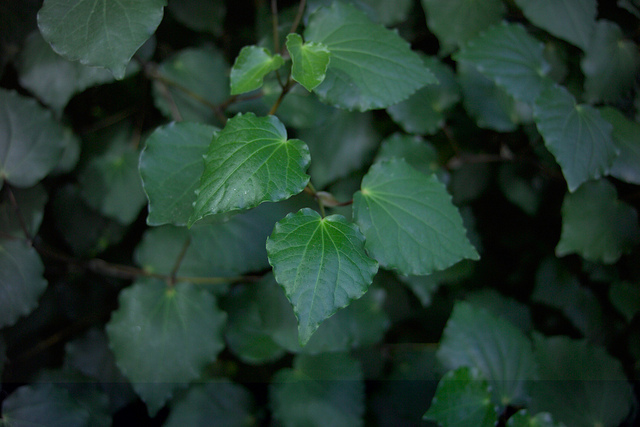Kahupeka

Pre-1500 discoverer of medicines
A little south-east of Hamilton lies Pirongia Mountain. The full name, Pirongia-te-aroaro-ō-Kahu, has been translated to mean the scented pathway of Kahu.1 A more prosaic translation instead involves a less-than-pleasant scent associated with illness, for which she sought a relief amongst the native flora.2 Kahupeka was a Tainui woman who, bereft at the death of her husband and ill – possibly from a miscarriage – traversed most of the King Country hinterland, searching for and experimenting with the native plants along the way. Various stories include her use of harakeke; koromiko, a long-leafed shrub used for a variety of ills; kawakawa (above), a member of the pepper tree family; and rangiora, which has the largest leaves of any of the tree daisies and is sometimes known as bushman’s friend. More than 200 plants were used medicinally by Māori3, and pioneers like Kahupeka had to experiment to find what worked.
Image: Kawakawa. Source: Flickr.com
References:
1. Martin Fisher, ‘The Environmental Management of Pirongia Forest Park with a Focus on the Period Since 1970’, 2014.
2. Tom Roa, personal communication, 31 July 2017.
3. New Zealand Ministry for Culture and Heritage Te Manatu Taonga, ‘3. – Rongoā – Medicinal Use of Plants – Te Ara Encyclopedia of New Zealand’, Web page, accessed 31 July 2017, /en/rongoa-medicinal-use-of-plants/page-3.
This profile is part of the series 150 Women in 150 Words that celebrates women’s contributions to expanding knowledge in New Zealand, running as part of our 150th Anniversary.
